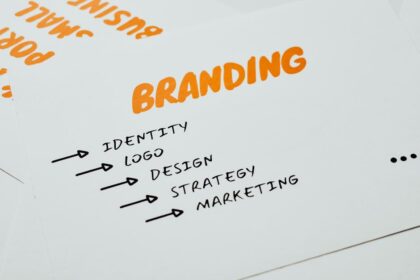The integration of artificial intelligence within content marketing paradigms represents a transformative shift, fundamentally redefining operational efficiency and strategic outcomes for businesses across the globe. This evolution moves beyond mere automation, leveraging advanced algorithms to augment human capabilities, automate repetitive tasks, and derive actionable insights from vast datasets. The core promise of AI in this domain lies in its capacity to streamline workflows, accelerate content production, enhance personalization at scale, and optimize performance metrics, thereby delivering an unprecedented level of efficiency in the complex ecosystem of content creation and dissemination.
AI for Content Ideation and Strategy: Precision in Planning
AI’s initial impact on content marketing efficiency often manifests at the foundational level of ideation and strategic planning. Traditionally, these processes relied heavily on manual research, qualitative analysis, and intuitive assumptions, often proving time-consuming and prone to human bias. AI-driven solutions inject a layer of data-backed precision, allowing marketers to identify opportunities with far greater accuracy and speed.
-
Market Research and Trend Analysis: AI systems, particularly those utilizing machine learning and natural language processing (NLP), can ingest and analyze massive volumes of data from various sources: social media conversations, news articles, industry reports, search query logs, and competitor content. This analytical power enables them to identify emerging trends, shifting consumer sentiments, and nascent market demands long before they become mainstream. Predictive analytics algorithms can forecast the longevity and impact of specific topics, allowing marketers to invest resources in content themes with higher potential for sustained engagement. Instead of guessing what audiences might be interested in, AI provides real-time, data-driven insights into what they are actively discussing, searching for, and engaging with, drastically cutting down the time spent on manual trend spotting and reducing the risk of creating irrelevant content. This proactive approach ensures content remains timely and resonant, maximizing its initial impact and long-term relevance.
-
Audience Understanding and Segmentation: Developing accurate buyer personas and segmenting audiences effectively is paramount for targeted content. AI tools revolutionize this by analyzing demographic data, behavioral patterns (e.g., website navigation, purchase history, content consumption), psychographic traits gleaned from social media interactions, and even sentiment expressed in reviews or comments. Algorithms can detect subtle patterns and correlations that human analysts might miss, creating highly granular audience segments. This level of insight allows marketers to craft content that speaks directly to the unique pain points, motivations, and preferences of each segment. The efficiency gain is twofold: less time is spent on manual data collation and interpretation, and the resulting personas are significantly more precise, leading to higher engagement rates and better conversion through hyper-relevant content. AI can also dynamically adjust these segments as new data emerges, ensuring personas remain current and effective.
-
Competitor Analysis: Understanding the competitive landscape is crucial for carving out a unique content niche. AI platforms can meticulously analyze competitors’ content strategies, identifying their most successful articles, keywords they rank for, their content formats, distribution channels, and audience engagement levels. This includes deep dives into their social media performance, backlink profiles, and even the sentiment around their brand. By automating this laborious data collection and analysis, AI empowers marketers to swiftly pinpoint competitor strengths and weaknesses, discover content gaps they can exploit, and learn from successful strategies while avoiding pitfalls. The efficiency stems from the speed and comprehensiveness of this analysis, enabling quicker strategic adjustments and more informed content decisions that directly aim to outperform rivals.
-
Topic Generation and Content Gap Analysis: One of the most significant bottlenecks in content creation is consistently generating fresh, relevant topic ideas. AI excels here by analyzing what topics are trending, what questions audiences are asking (e.g., from “People Also Ask” sections in SERPs, forum discussions), and crucially, what content gaps exist within a specific niche. AI can identify areas where there’s high search demand but low-quality or insufficient content supply. It can also suggest related topics or sub-topics that complement existing content, building robust content clusters and pillar pages. This moves beyond simple keyword research, delving into semantic relationships and user intent, ensuring that suggested topics are not only searchable but also truly valuable and comprehensive. The efficiency is derived from automating the brainstorming process, providing a constant stream of data-validated ideas, and ensuring content efforts are directed towards topics with the highest potential ROI.
-
Keyword Research and Semantic SEO: Traditional keyword research, while essential, can be exhaustive. AI tools enhance this process by moving beyond individual keywords to understand semantic relationships and user intent. They can analyze entire search queries, identify long-tail keywords with high conversion potential, discover latent semantic indexing (LSI) keywords, and group related keywords into comprehensive topic clusters. AI can also predict keyword performance based on competition and search volume, optimizing keyword selection for maximum visibility. This holistic approach ensures that content is not just optimized for specific terms but for the broader context of user queries, significantly improving search engine rankings and organic traffic. The speed and depth of AI-powered keyword analysis far surpass manual methods, making the entire SEO strategy more efficient and effective.
-
Content Calendar Optimization: An optimized content calendar ensures timely delivery and alignment with strategic goals. AI can analyze historical performance data, audience engagement patterns, and external factors (e.g., holidays, industry events) to recommend optimal publishing times and frequencies for various content types and channels. It can also identify potential content seasonality and suggest proactive scheduling. Some AI tools can even dynamically adjust the content calendar based on real-time performance data or emerging trends, ensuring that the content strategy remains agile and responsive. This intelligent scheduling minimizes wasted effort on poorly timed releases and maximizes the impact of each piece of content, leading to a more efficient allocation of content resources and a steadier flow of valuable output.
AI for Content Creation and Curation: Accelerating Production
Perhaps the most visible and impactful application of AI in content marketing efficiency is within the creation and curation phases. From generating raw drafts to refining existing content, AI tools are fundamentally changing the speed, scale, and quality of content output.
-
Automated Content Generation: Natural Language Generation (NLG) is at the forefront of AI-driven content creation. These systems can transform structured data into human-readable text, or, more recently, leverage large language models (LLMs) like GPT-3/4 to generate creative, coherent, and contextually relevant prose from simple prompts.
- Natural Language Generation (NLG) in Detail: NLG technologies work by processing input data or prompts and then using sophisticated algorithms to construct sentences, paragraphs, and full articles that mimic human writing styles. Early NLG focused on templated generation for financial reports, sports summaries, or product descriptions. Modern LLMs, however, are trained on vast datasets of text, allowing them to understand context, generate creative prose, and even mimic specific tones and styles. They can write blog post drafts, social media updates, email subject lines, headlines, ad copy, video scripts, product descriptions, meta descriptions, and even foundational research summaries. The efficiency gain is monumental: what might take a human writer hours or days, an AI can generate in minutes, providing a robust first draft that significantly reduces the time to publication.
- Prompt Engineering for Optimal Output: While AI can generate content, the quality and relevance of its output are highly dependent on the “prompts” or instructions given to it. Prompt engineering has emerged as a critical skill, involving crafting precise, clear, and comprehensive instructions that guide the AI to produce the desired content. This includes specifying the target audience, tone of voice, key message, desired length, format, and even examples of preferred writing styles. By meticulously crafting prompts, marketers can drastically reduce the need for extensive human editing and revision, making the content generation process far more efficient. Iterative refinement of prompts based on AI output is key to harnessing its full potential.
- Human-AI Collaboration Model: It’s crucial to understand that AI is not replacing human creativity but augmenting it. The most efficient content workflows involve a collaborative model where AI generates initial drafts, brainstorms ideas, or performs repetitive tasks, while human marketers provide strategic direction, refine the output for nuance, ensure factual accuracy, infuse brand voice, and add the unique emotional intelligence that only a human can provide. This hybrid approach leverages the speed and scalability of AI with the creativity, critical thinking, and empathy of human writers, resulting in higher quality content produced at an accelerated pace. The efficiency here lies in offloading the heavy lifting to AI, freeing human resources for higher-level strategic and creative endeavors.
-
Content Repurposing and Reformatting: Maximizing the value of existing content is a core efficiency strategy. AI tools can automate the laborious process of repurposing content across different formats and channels. For instance, an AI can transform a long-form blog post into a concise social media thread, extract key points for an email newsletter, generate a script for a short video, or create bullet-point summaries for infographics. This capability drastically reduces the time and effort required to leverage content assets across the entire marketing funnel, extending their reach and impact without needing to create entirely new pieces from scratch. The efficiency is derived from the immediate transformation of existing high-value content into multiple consumer-ready formats.
-
Image and Video Generation: Beyond text, generative AI is making strides in multimedia content creation. AI art generators can create unique images from text prompts, producing custom visuals for blog posts, social media, or advertisements, eliminating the need for extensive stock photo searches or costly graphic design. While still evolving, AI-powered video generation tools can create short video clips, animations, or even synthesize realistic human presenters from text scripts. This capability promises to democratize multimedia content production, making it accessible and efficient for marketers who may lack professional design or video editing skills. The time and cost savings in acquiring visual assets are substantial, enhancing the overall efficiency of content production workflows.
-
Grammar, Style, and Plagiarism Checking: AI-powered writing assistants (like Grammarly, Writer, Jasper AI’s editing features) go beyond basic spell-checking. They analyze grammar, punctuation, sentence structure, readability, tone, and even suggest improvements for clarity and conciseness. Some can also enforce brand-specific style guides, ensuring consistency across all content. Furthermore, AI-driven plagiarism checkers can rapidly scan vast databases of text to ensure originality, protecting brand reputation and maintaining ethical standards. These tools drastically reduce the time spent on manual proofreading and editing, minimize errors, and ensure a professional output, significantly enhancing the efficiency of the content quality assurance process.
-
Content Brief Generation: Before content creation begins, a detailed brief is essential. AI can streamline this by automatically generating comprehensive content briefs based on chosen keywords, competitor analysis, audience insights, and desired content goals. These briefs can include suggested headings, key talking points, target word count, SEO requirements, and even potential internal links. This automated brief generation ensures that writers (human or AI) start with a clear, data-informed roadmap, minimizing back-and-forth communication and ensuring the content produced is aligned with strategic objectives from the outset, leading to a much more efficient content creation pipeline.
-
Curated Content Discovery and Aggregation: Content curation – finding, organizing, and sharing relevant third-party content – is an effective strategy for maintaining audience engagement and establishing thought leadership. AI tools can efficiently discover high-quality, relevant articles, news, and research papers from across the web based on specified topics and audience interests. They can filter out noise, prioritize authoritative sources, and even summarize key takeaways. This automated discovery and aggregation process saves marketers countless hours typically spent manually sifting through information, allowing them to consistently provide valuable curated content to their audience with minimal effort.
AI for Content Optimization and Personalization: Maximizing Impact
Content creation is only half the battle; ensuring it reaches the right audience and resonates effectively is where optimization and personalization come into play. AI significantly enhances efficiency in these areas by providing data-driven insights and enabling granular customization at scale.
-
SEO Optimization (On-Page, Technical SEO Insights): AI tools for SEO go beyond basic keyword insertion. They can analyze existing content for on-page optimization deficiencies, recommending improvements in headline structure, meta descriptions, image alt text, and internal linking. They can also identify technical SEO issues on websites, such as crawlability problems, broken links, or slow loading times, and suggest solutions. Advanced AI can analyze competitor backlink profiles and content authority to recommend link-building opportunities. By automating the auditing process and providing precise, actionable recommendations, AI drastically reduces the manual effort and expertise required to keep content search-engine-friendly, leading to higher rankings and more organic traffic with greater efficiency.
-
Readability and Engagement Scoring: AI-powered tools can analyze content for its readability, identifying complex sentences, jargon, or passive voice that might hinder comprehension. They can assign a readability score (e.g., Flesch-Kincaid) and suggest simpler alternatives, ensuring the content is accessible to the target audience. Beyond readability, some AI models can predict engagement by analyzing historical data on similar content, assessing factors like sentiment, emotional tone, and call-to-action effectiveness. This predictive capability allows marketers to refine content before publication, increasing its likelihood of captivating the audience, thus making content efforts more efficient by improving their intrinsic appeal.
-
Personalized Content Delivery (Dynamic Content, Individualized Recommendations): The holy grail of content marketing is delivering highly relevant content to each individual. AI makes hyper-personalization at scale a reality. By analyzing individual user behavior (past interactions, preferences, demographics, real-time context), AI algorithms can dynamically adjust website content, email recommendations, or ad creatives in real-time. For an e-commerce site, this means showing product recommendations tailored to browsing history; for a blog, it means suggesting articles based on past reading patterns. This capability moves beyond simple segmentation to true one-to-one content experiences, dramatically increasing engagement, conversion rates, and customer satisfaction, all achieved with an efficiency that manual personalization efforts could never match. AI algorithms learn and adapt, continuously refining personalization over time.
-
A/B Testing and Multivariate Testing with AI: Traditional A/B testing can be time-consuming and often provides limited insights. AI elevates testing efficiency significantly. AI algorithms can not only automate the A/B testing process but also intelligently determine which variations to test, analyze the results faster, and identify the underlying factors contributing to success or failure. Multivariate testing, which involves testing multiple variables simultaneously, becomes feasible at scale with AI, something that is incredibly complex and time-consuming manually. AI can quickly discern optimal combinations of headlines, images, calls-to-action, and layouts, converging on the most effective content elements much faster than human-driven tests, leading to accelerated learning and optimization cycles.
-
Predictive Content Performance: Imagine knowing how a piece of content will perform before it’s even published. AI can analyze numerous data points—historical performance of similar content, audience engagement metrics, keyword competition, current trends, and even the emotional tone of the content itself—to predict its likely success. This includes forecasting potential organic traffic, social shares, conversion rates, and even the likelihood of going viral. Such predictive insights allow marketers to prioritize content with the highest predicted ROI, refine underperforming pieces pre-publication, and allocate marketing budgets more effectively, leading to a much more efficient use of resources and a higher overall success rate for content initiatives.
AI for Content Distribution and Promotion: Expanding Reach Intelligently
Once content is created and optimized, its distribution and promotion determine its reach and impact. AI significantly enhances efficiency in this stage by automating tasks, optimizing targeting, and identifying the most effective channels and timings.
-
Automated Social Media Scheduling and Optimization: Managing multiple social media platforms and maintaining consistent posting can be a time sink. AI-powered social media management tools can analyze audience activity patterns, trending topics, and historical performance data to recommend optimal posting times for maximum reach and engagement on each specific platform. They can also automate the scheduling of posts, often including content generated or repurposed by AI. Furthermore, some AI tools can analyze the sentiment of comments and respond automatically to simple queries or flag complex ones for human intervention, significantly reducing manual effort in social media management while enhancing responsiveness and audience interaction.
-
Email Marketing Automation and Personalization: Email remains a powerful content distribution channel. AI revolutionizes its efficiency by enabling hyper-personalization and optimizing campaign performance. AI can segment email lists with precision based on user behavior and preferences, dynamically generate personalized email content (e.g., product recommendations, article suggestions), and optimize send times for individual subscribers to maximize open and click-through rates. AI can also analyze email subject line effectiveness, body copy engagement, and A/B test variations at scale. The automation of these processes ensures that the right message reaches the right person at the right time, significantly improving email campaign ROI and reducing manual campaign management time.
-
Paid Ad Campaign Optimization: Running effective paid advertising campaigns requires continuous monitoring and optimization. AI excels here by automating bid management, dynamically adjusting ad copy and creatives based on real-time performance, and precisely targeting audiences. AI algorithms can identify high-performing audience segments, predict which keywords will yield the best results, and allocate budgets optimally across different channels (e.g., Google Ads, social media ads). This constant, data-driven optimization leads to significantly lower cost-per-acquisition (CPA) and higher return on ad spend (ROAS), making paid content promotion far more efficient and effective than manual campaign management.
-
Influencer Identification and Outreach: Finding the right influencers can be a needle-in-a-haystack task. AI-powered platforms can efficiently scan vast social media landscapes to identify influencers whose audience demographics, interests, and engagement patterns align perfectly with a brand’s target audience. They can analyze sentiment around potential influencers, detect fake followers, and even predict the potential ROI of a collaboration. Some tools can also automate aspects of the initial outreach. This significantly streamlines the influencer marketing process, reducing the time spent on manual vetting and increasing the likelihood of successful, impactful partnerships.
-
Chatbots for Content Delivery and FAQs: Chatbots, powered by AI and NLP, offer an efficient way to distribute content and answer audience questions 24/7. Integrated into websites, social media platforms, or messaging apps, they can guide users to relevant articles, product pages, or videos based on their queries. They can handle a high volume of common questions, freeing human customer service teams to focus on more complex issues. This immediate access to information improves user experience and provides content efficiently without requiring direct human interaction, making content more accessible and improving customer satisfaction, which indirectly boosts content efficacy.
-
AI-powered CRM Integration: When AI integrates with Customer Relationship Management (CRM) systems, it creates a powerful synergy for content marketing. AI can analyze customer data within the CRM to identify lifecycle stages, content consumption patterns, and predictive churn risks. This allows marketers to proactively deliver highly relevant content at critical touchpoints, nurturing leads and retaining customers more effectively. For example, AI can trigger automated content sequences based on specific customer actions or inactivity, ensuring timely and personalized engagement. This integration ensures content efforts are precisely aligned with customer journeys, maximizing their impact and the efficiency of the entire sales and marketing funnel.
AI for Content Performance Measurement and Analytics: Unveiling Actionable Insights
Measuring content performance is critical for understanding ROI and making data-driven improvements. AI significantly enhances efficiency in this domain by automating data collection, performing advanced analytics, and generating actionable insights that would be laborious or impossible for humans to uncover manually.
-
Real-time Performance Tracking: AI-powered dashboards and analytics tools can track a multitude of content performance metrics in real-time, far beyond simple page views. This includes engagement metrics (time on page, scroll depth, heatmaps, clicks), conversion rates, social shares, backlink acquisition, and keyword rankings. The efficiency lies in the immediate availability of comprehensive data, allowing marketers to quickly identify what’s working and what’s not, facilitating agile adjustments to content strategy or promotion tactics without delay. This continuous monitoring ensures that resources are always directed towards the most effective content types and channels.
-
Predictive Analytics for ROI: Moving beyond historical data, AI can forecast future content performance and predict the return on investment (ROI) of various content initiatives. By analyzing vast datasets including market trends, competitor actions, and historical content performance, AI can estimate the potential impact of new content on leads, sales, and brand awareness. This predictive capability allows marketers to allocate budgets more efficiently, prioritize content that is likely to deliver the highest ROI, and justify content marketing spend with greater confidence. It transforms content marketing from a cost center into a clear revenue driver, improving financial efficiency.
-
Attribution Modeling: Understanding which content pieces contributed to a conversion across a complex customer journey is notoriously difficult with traditional linear attribution models. AI-driven attribution models can analyze multi-touchpoint journeys, assigning credit more accurately to each content interaction that influenced a conversion. This probabilistic modeling helps marketers understand the true value of different content assets (e.g., a blog post that initiated the journey vs. an email that closed the sale) and optimize their content mix accordingly. The efficiency comes from uncovering true content value, ensuring that resources are invested in content that genuinely drives business outcomes, rather than just superficial engagement.
-
Audience Sentiment Analysis: AI-powered natural language processing (NLP) can analyze vast amounts of text data—social media comments, customer reviews, forum discussions, survey responses—to gauge audience sentiment towards specific content, products, or the brand as a whole. It can identify positive, negative, or neutral sentiment, detect emerging issues, and even categorize the emotions expressed. This provides invaluable feedback on how content is being received and allows marketers to quickly address negative perceptions or double down on themes that resonate positively, making content more responsive to audience needs and optimizing its emotional impact with high efficiency.
-
Competitor Performance Benchmarking: AI tools can continuously monitor and benchmark your content performance against competitors. They can track competitor keyword rankings, traffic estimates, content engagement metrics, and social media presence. This constant comparative analysis provides insights into industry best practices, helps identify content gaps your competitors are exploiting, and highlights areas where your content strategy can improve to gain a competitive edge. The automated nature of this benchmarking saves significant research time and provides ongoing strategic guidance, ensuring your content remains competitive and optimized for market leadership.
-
Automated Reporting and Insights Generation: Generating comprehensive content performance reports can be a tedious and time-consuming task. AI can automate the collection, aggregation, and visualization of data from various sources (Google Analytics, social media platforms, CRM, SEO tools) into customizable dashboards and reports. More importantly, advanced AI can go beyond just presenting data; it can generate narrative insights, highlighting key trends, anomalies, and actionable recommendations in plain language. This frees up marketing teams from manual reporting, allowing them to focus on strategizing and execution, making the entire analytical process remarkably more efficient.
-
Identifying Bottlenecks and Opportunities: AI’s analytical power extends to identifying inefficiencies within the content marketing workflow itself. By analyzing performance data across different stages of the content lifecycle, AI can pinpoint bottlenecks—for example, specific content types that consistently underperform, distribution channels that yield poor ROI, or parts of the customer journey where content fails to convert. Conversely, it can highlight unexpected opportunities, such as niche topics gaining traction, new platforms for content distribution, or emerging audience segments. This diagnostic capability allows for continuous optimization of the entire content marketing ecosystem, enhancing overall operational efficiency.
Ethical Considerations and Challenges: Navigating the AI Landscape Responsibly
While AI promises immense efficiency gains, its deployment in content marketing is not without ethical considerations and inherent challenges that require careful navigation. Addressing these issues is crucial for sustainable and responsible AI integration.
-
Bias in AI Algorithms: AI models are trained on vast datasets, and if these datasets contain inherent biases (e.g., gender, racial, cultural stereotypes), the AI will learn and perpetuate these biases in its content generation or analysis. This can lead to content that is discriminatory, unrepresentative, or alienating to certain audience segments. Ensuring the training data is diverse, fair, and regularly audited is paramount. Marketers must exercise human oversight to detect and mitigate biased outputs, ensuring content remains inclusive and equitable. The efficiency of AI must not come at the cost of ethical integrity or brand reputation.
-
Data Privacy and Security: AI systems, particularly those involved in personalization and audience analytics, rely on processing vast amounts of personal and behavioral data. This raises significant concerns regarding data privacy and security. Marketers must ensure strict adherence to data protection regulations like GDPR and CCPA, obtain explicit user consent where required, and implement robust cybersecurity measures to protect sensitive data from breaches. The efficient use of data must be balanced with the ethical imperative to safeguard user privacy and maintain trust. Mismanaging data can lead to severe reputational damage and legal repercussions.
-
Maintaining Brand Voice and Authenticity: While AI can mimic writing styles, consistently capturing and maintaining a unique brand voice, tone, and personality across all AI-generated content can be challenging. Over-reliance on generic AI output can lead to content that feels robotic, lacks emotional depth, or deviates from established brand guidelines, eroding authenticity. Human oversight is essential to infuse the unique nuances of a brand’s voice, ensure emotional resonance, and add the distinct human touch that connects with audiences on a deeper level. The efficiency of AI should augment, not dilute, brand authenticity.
-
Copyright and Ownership of AI-Generated Content: The legal landscape surrounding AI-generated content is still evolving. Questions arise about who owns the copyright to content created by an AI: the user who prompted it, the developer of the AI model, or the AI itself? This ambiguity can lead to legal disputes, particularly if AI generates content that inadvertently infringes on existing copyrights or patents. Marketers must stay informed about developing legal frameworks and exercise caution, especially when using AI-generated visuals or highly unique text, ensuring that their use doesn’t create unforeseen legal liabilities.
-
The Role of Human Oversight and Creativity: Despite AI’s advancements, human creativity, critical thinking, ethical judgment, and emotional intelligence remain indispensable. AI is a tool, not a replacement for human strategic thought. Over-automation without human oversight can lead to factual inaccuracies, irrelevant content, or a loss of genuine connection with the audience. Marketers must view AI as an assistant that handles mundane tasks, freeing them to focus on higher-level strategy, creative ideation, quality assurance, and fostering authentic human connections. The efficient deployment of AI hinges on empowering humans, not sidelining them.
-
Job Displacement Concerns vs. Augmentation: A common concern is that AI will lead to widespread job displacement for content marketers, writers, and strategists. While some repetitive or data-heavy tasks may be automated, the more likely scenario is job augmentation. AI transforms existing roles, requiring new skills such as prompt engineering, AI tool management, data interpretation, and ethical AI governance. Marketers who embrace AI, learn new skills, and focus on the uniquely human aspects of their roles will thrive. The efficiency gained by AI should ideally allow teams to accomplish more with the same resources, or reallocate human effort to more strategic, high-impact activities.
-
Misinformation and Deepfakes: As generative AI becomes more sophisticated, there’s a growing risk of it being used to create convincing misinformation, propaganda, or deepfakes (synthetic media that portray people saying or doing things they never did). Content marketers, and society at large, face the challenge of discerning authentic content from AI-generated fabrications. Brands must be vigilant to ensure their AI tools are not inadvertently contributing to the spread of misinformation, and actively work to maintain truthfulness and transparency in all their communications, upholding trust in an increasingly complex media landscape.
Implementing AI in Content Marketing Workflows: A Practical Approach
Successfully integrating AI into content marketing operations requires a strategic and methodical approach, moving beyond theoretical understanding to practical application.
-
Assessment of Current Needs and Pain Points: Before adopting any AI tools, a thorough assessment of existing content marketing workflows is essential. Identify specific bottlenecks, repetitive tasks, areas lacking sufficient data insights, or processes that are consistently time-consuming or resource-intensive. Are content ideation cycles too long? Is content production slow? Is personalization lacking? Are analytics difficult to interpret? Pinpointing these pain points will guide the selection of appropriate AI solutions and provide clear metrics for measuring success. This diagnostic phase ensures AI adoption is needs-driven and efficiency-focused.
-
Choosing the Right AI Tools and Platforms: The market for AI marketing tools is rapidly expanding. Selecting the right ones involves considering several factors:
- Specific Problem Solved: Does the tool directly address one or more identified pain points (e.g., content generation, SEO optimization, social media management)?
- Integration Capabilities: Can it seamlessly integrate with your existing MarTech stack (CRM, CMS, analytics platforms)?
- Scalability: Can it grow with your content needs?
- Ease of Use: Is the interface intuitive for your team?
- Accuracy and Reliability: What is the quality of its output or insights?
- Cost-Effectiveness: Does the potential ROI justify the investment?
- Vendor Support and Reputation: What kind of support does the vendor offer?
- Starting with tools that address immediate, high-impact pain points often yields the most immediate efficiency gains.
-
Integration Strategies with Existing MarTech Stack: AI tools are most effective when they don’t operate in silos. Seamless integration with your Content Management System (CMS), CRM, marketing automation platforms, and analytics tools ensures a cohesive workflow and unified data flow. APIs (Application Programming Interfaces) facilitate this connectivity, allowing data to flow freely between systems. A well-integrated AI ecosystem means that insights from one tool can inform another (e.g., audience segments from CRM informing AI content generation, or AI performance analytics feeding back into the content calendar). This holistic approach maximizes efficiency by eliminating manual data transfer and ensuring a single source of truth.
-
Training Teams and Fostering Adoption: Technology adoption is only successful if the people using it are well-trained and comfortable. Provide comprehensive training for marketing teams on how to effectively use AI tools, including prompt engineering for generative AI, interpreting AI-driven insights, and understanding the limitations of the technology. Emphasize that AI is a co-pilot, not a replacement. Foster a culture of experimentation and continuous learning. Addressing fears about job displacement through education and demonstrating how AI augments their capabilities can significantly accelerate adoption and ensure that the efficiency gains are realized across the entire team.
-
Starting Small and Scaling Up: Instead of attempting a complete overhaul of content operations with AI, begin with pilot projects or specific use cases. Start with automating one repetitive task (e.g., social media post generation) or using AI for one specific analytical need (e.g., competitor analysis). Measure the efficiency gains and ROI from these smaller initiatives. Based on the successes and lessons learned, gradually expand AI integration to other areas of the content marketing workflow. This iterative approach allows for controlled experimentation, minimizes risk, and builds internal confidence in AI’s capabilities, ensuring a more sustainable and efficient transition.
-
Measuring Success of AI Integration: Clearly define Key Performance Indicators (KPIs) to measure the impact of AI on content marketing efficiency. These could include:
- Time Savings: Reduced content production cycles, faster research times.
- Cost Reduction: Lower expenditures on content creation, ad campaigns, or market research.
- Improved Performance Metrics: Higher engagement rates, better SEO rankings, increased conversions, improved ROI.
- Content Volume and Velocity: Ability to produce more high-quality content faster.
- Personalization Scale: Ability to deliver more personalized experiences to more users.
Continuously monitor these KPIs and use the data to refine AI implementation strategies, ensuring that AI investments consistently deliver tangible efficiency improvements and contribute to overall business objectives.
The Future Landscape of AI in Content Marketing: Autonomous and Hyper-personalized
The current state of AI in content marketing, while transformative, is merely a precursor to a far more sophisticated future. The trajectory suggests an evolution towards increasingly autonomous, hyper-personalized, and ethically integrated content ecosystems.
-
Hyper-personalization at Scale: While current AI enables significant personalization, the future promises an even deeper level of individual tailoring. Advanced AI will move beyond segment-based dynamic content to truly unique, real-time content streams crafted for each individual consumer across every touchpoint. This means not just recommending a product, but generating a personalized product description, a unique ad copy, and a custom email sequence, all optimized for that specific user’s current context, mood, and predicted needs, driven by an ever-learning AI engine. The efficiency gain will be the ability to create truly one-to-one marketing at a mass scale, something previously unimaginable.
-
Autonomous Content Marketing Systems: Imagine a future where AI systems can independently perform entire content marketing campaigns, from ideation to distribution and optimization. These “autonomous agents” could identify a trending topic, research it, generate a blog post, repurpose it for social media, schedule its distribution, monitor its performance, and make real-time adjustments without human intervention beyond initial strategic oversight. This does not mean replacing humans entirely but freeing them to focus on the highest-level strategy, creative vision, and fostering human relationships, with AI executing the tactical elements with unparalleled efficiency and speed.
-
Advanced Multimodal AI: Current AI often specializes in one modality (text, image, audio). The future will see increasingly sophisticated multimodal AI that can seamlessly understand, generate, and integrate content across all forms simultaneously. For example, an AI could take a text prompt, generate a blog post, create a unique accompanying image, synthesize a voice-over for a video version, and even edit the video, all as a unified creative output. This will drastically reduce the time and resources required to produce rich, diverse content formats, enhancing content marketing efficiency across all media types.
-
Ethical AI Frameworks and Regulations: As AI becomes more pervasive and powerful, the emphasis on ethical AI frameworks and robust regulatory guidelines will intensify. Content marketers will need to operate within clearer boundaries regarding data privacy, bias detection and mitigation, transparency in AI use (e.g., disclosing AI-generated content), and copyright. Adherence to these frameworks will not just be a legal necessity but a brand imperative for maintaining trust. The efficiency of AI will increasingly be judged not just on speed and cost, but on its responsible and ethical deployment, necessitating new forms of efficiency in compliance and ethical governance.
-
The Evolving Role of the Content Marketer: The content marketer of the future will be less of a content producer and more of a content orchestrator, strategist, and AI trainer. Their role will shift towards:
- Prompt Engineering Expert: Crafting precise instructions for AI to generate optimal content.
- Data Interpreter: Translating AI-driven insights into actionable content strategies.
- Ethical Guardian: Ensuring AI-generated content aligns with brand values and ethical standards.
- Creative Director: Infusing unique human creativity, empathy, and strategic vision into AI workflows.
This evolution suggests a higher-level, more strategic role for content marketers, leveraging AI’s efficiency for tactical execution to focus on driving innovation and deeper audience connections. The future promises a collaborative synergy where human ingenuity, augmented by AI’s computational power, unlocks unprecedented levels of content marketing efficiency and impact. These synergistic developments underscore a future where content marketing becomes an increasingly intelligent, responsive, and ultimately more impactful endeavor, precisely tailored to evolving digital landscapes.











